I like a camera with history, something unique, a variant or a failed move forward. While I’m a Nikon shooter, Nikon cameras are fairly dull in the broader picture of photographic history. Sure, Nikon cameras often set the standard for photography and technology, but they often played it safe. On the flip side, Canon tried different things, they experimented, and sometimes it worked. Other times it was too early. The Canon Pellix is a fine example of the engineers at the company in the 1960s who wanted to try everything to improve photography. Sadly they were several decades ahead of the game. Thanks to Ori Carmona, who loaded the Pellix and lens out for a review.
Camera Specifications
Make: Canon
Model: Pellix
Type: Single Lens Reflex (Pellical Mirror)
Format: 135 (35mm), 36x24mm
Lens: Interchangable, Canon FL-Mount
Shutter: Cloth Horizontal Travel Focal Plane Shutter, 1″ – 1/1000″ + Bulb
Meter: CdS TTL Meter, EV0.5 ~ EV18 @ ASA-100, ASA-25 – ASA-2000
Year of Manufacture: 1965-1966, QL Version: 1966-1970
Background
The 1960s were an exciting time for the Japanese camera industry. Among them, Canon was initially formed in 1933. They produced the country’s first compact 35mm rangefinder, the Hansa Canon (Standard Canon). Of course, they were among the companies tagged by the occupying US forces to help rebuild the shattered economy in the post-war era. Canon focused on rangefinders, but as the century moved to the middle, the single-lens-reflex camera rose in popularity. Canon’s first attempt at an SLR is Canon VL in 1956, proved less than popular and had several issues. The 1959 release of the Canonflex resolved these. The interchangeable lens system used a breech-lock system or R-Mount, utterly different from the other bayonet mounts from companies like Nikon, Pentax, and Minolta. But both being rushed into service, the Canonflex and R-Mount flopped. The problem lay with the lenses; the R-Mount and the mechanical coupling to the camera were overly complex, requiring two links once to prime the diaphragm the other to trigger it when the shutter is released. It also proved a pain to mount and dismount lenses, requiring both hands and the camera on a stable surface. At the same time, the R-Mount would survive through several more models with some improvements to the camera body with the R2000, RM and RP. But if Canon wanted to be a player, they needed to fix the R-Mount’s foundational issue. Taking their breach-lock, they simplified the design and improved the functionality allowing for coupled metering and renamed it the FL-Mount. The lens mount made its debut in 1964 with the Canon FX; what made the FX notable is that it included match-needle metering with an externally mounted CdS cell. There was nothing new about the FX; Minolta had done this earlier with their SR-7. But Canon had another trick up their sleeve and took the body of the FX and removed one of the critical parts of any SLR, the moving mirror, and in 1965 the Canon Pellix hit the market. Instead, Canon fixed the mirror in place and used a pellicle mirror. Pellicle mirrors have been used in photography for decades. The first example was in 1938 with the Devin tri-colour camera; most pellicle mirror cameras before the Pellix were colour separation cameras. A pellicle mirror is set up to allow a majority of the light through while allowing the minority to reflect. In the case of the Pellix, the mirror allowed two-thirds through while reflecting one-third. The Pellix also introduced open aperture TTL metering. It achieved metering by placing the CdS cell behind the mirror so that exposures are based on the lens’s light going through the mirror. This idea was introduced in 1963 with the Topcon RE. Of course, despite simplifying the design and reducing the amount of moving parts and camera shake from the mirror. The biggest issue was the dim viewfinder, the help that Canon released the Pellix with the 58mm f/1.2 lens. Canon did update the Pellix in 1966 with the Quick-Load system, but ultimately the system did not last long, nor did pellicle mirrors reach broad acceptance. And with the release of the new FD-Mount, the Pellix ceased production. Although that didn’t stop Canon from using their mirror design again, first with a unique 1972 F-1 High Speed for that year’s Olympics, and even Nikon followed suit with the 1976 Nikon F2H (High-Speed). Canon again used their pellicle design for the EOS RT in 1989 using the foundation of the EOS600/630 and the EOS-1N RT. The Sony SLT line of Alpha digital cameras from 2010 uses a pellicle mirror, but that design never took off popularly.
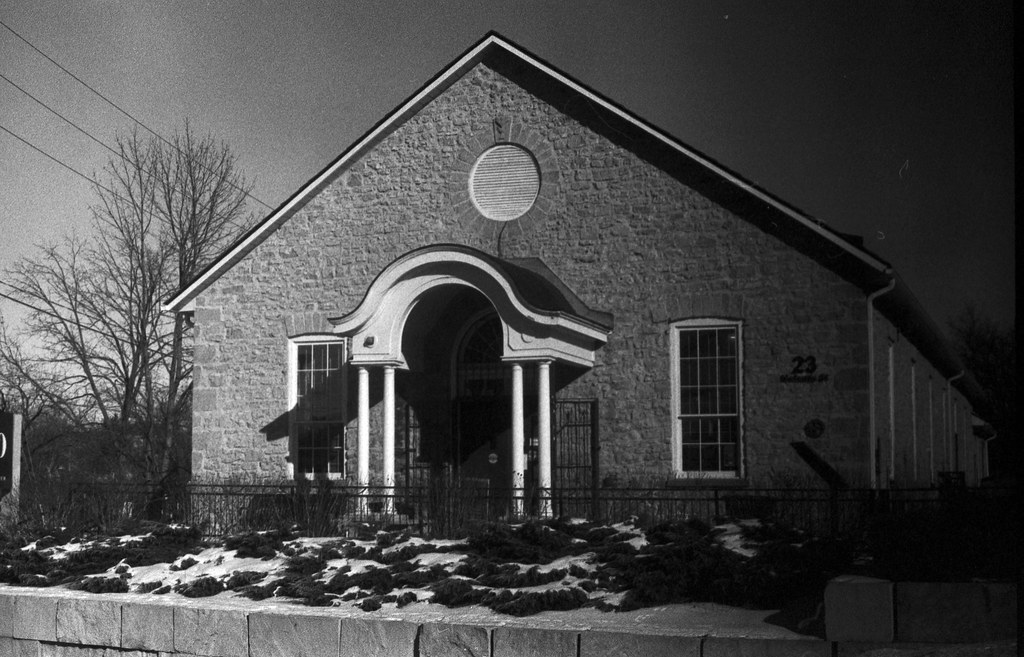
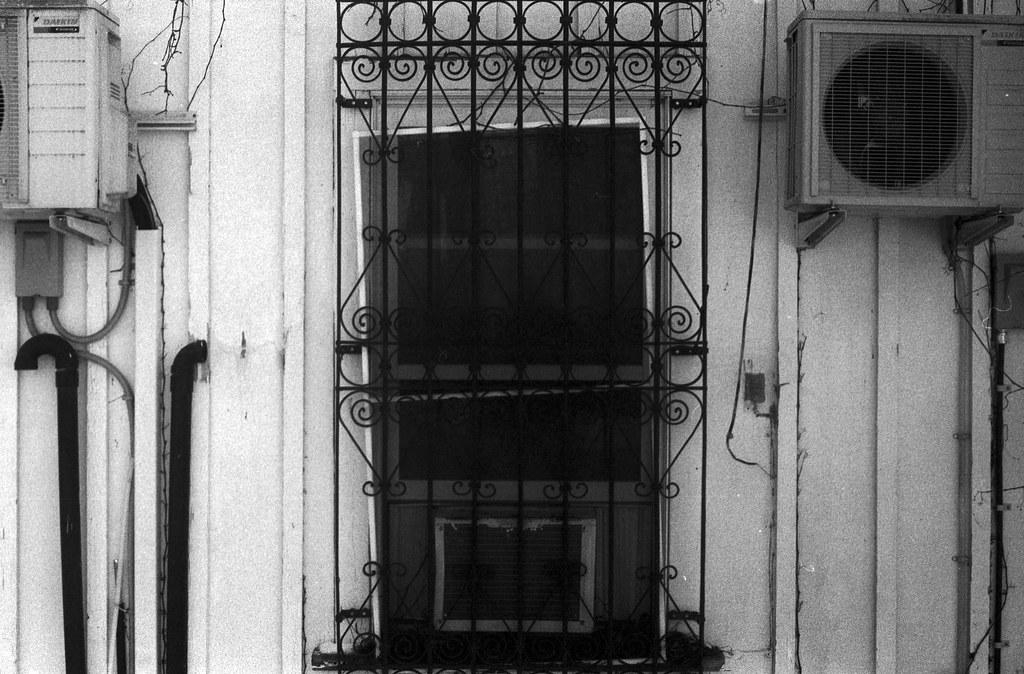
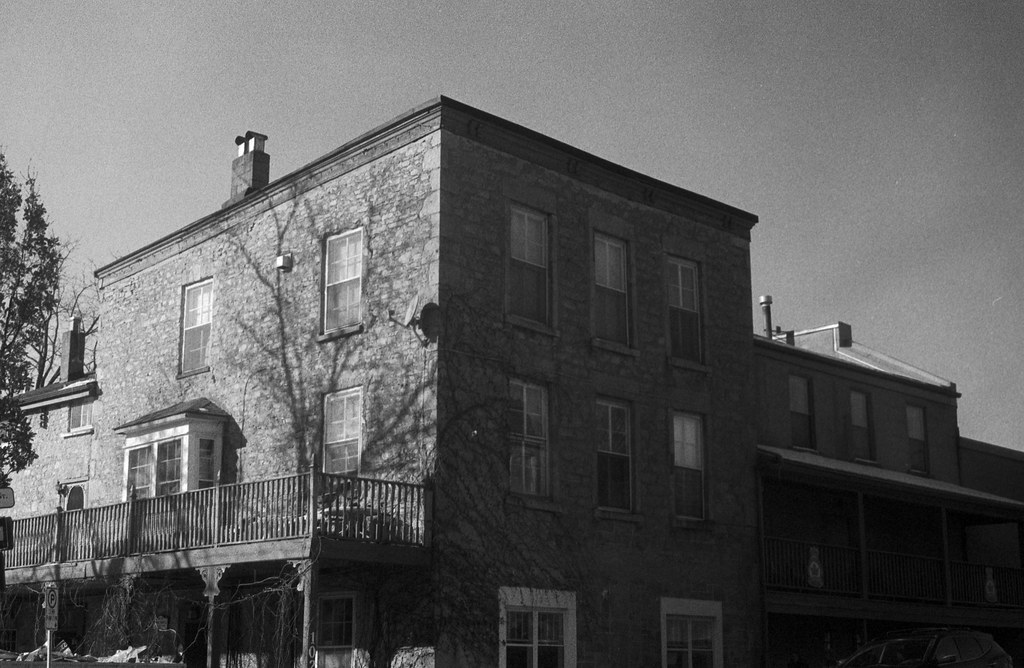

Impressions
You can see the mid-sixties design ethos in the Pellix; the design is no-nonsense, there’s nothing fancy about the camera body or frame. It’s a big, heavy chunk of metal, and despite having no moving parts for the mirror, it’s rather clunky. At least the edges are angled off, and the camera is reasonably comfortable to hold. The control layout is common, with everything you need quickly within reach, although a little crowded for someone using the camera while wearing gloves. And not having a solid click between the shutter speeds is a bit off-putting, so you have to remove your eye from the viewfinder. The film advance leaver also is nicely rounded and doesn’t dig into the fingers, although there is no plastic cover over the metal. The small shutter release has a collar lock to prevent accidental firing, a nice touch. The accessory shoe is mounted atop the pentaprism, but any flash connected will need a PC sync cord. The placement of the PC port is an interesting one; you have to be careful where you place your fingers as it might drift a little too close, and you could get a bit of a shock if you’re not careful. The battery terminal is on the side of the camera near the top, and while designed to accept 1.3V mercury cells, a modern 1.5V will fit and function fine with modern films. The FL-Lens focuses smoothly, although the lack of a split prism will make life difficult if you’re not used to focusing without one. The focusing ring is chunky with plenty of grips, and the aperture control ring has a different look and feels with two raised knurled sections to grip and adjust.

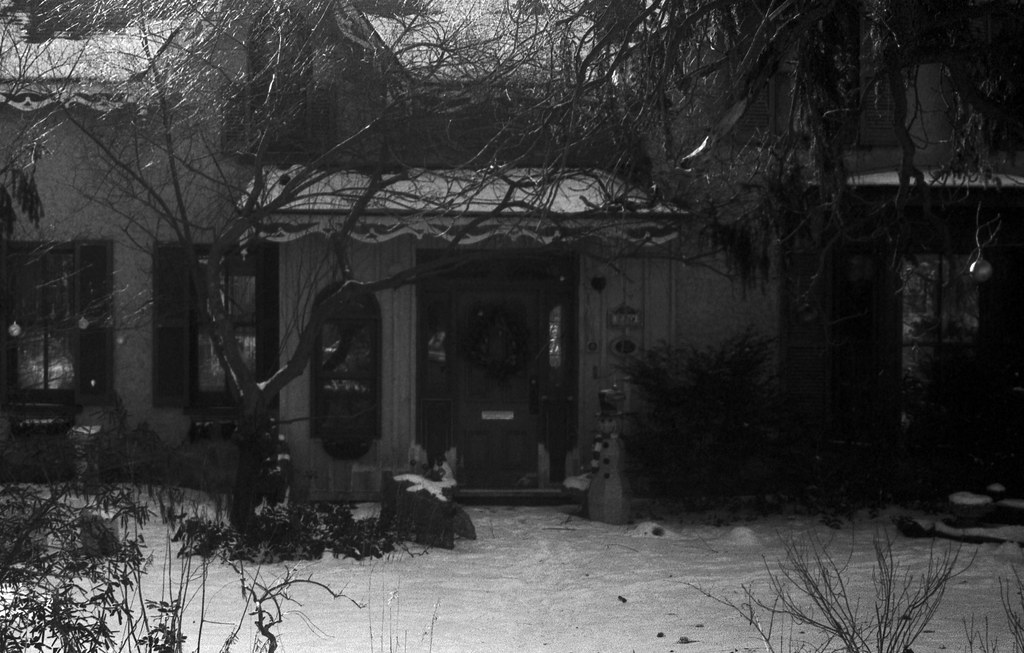
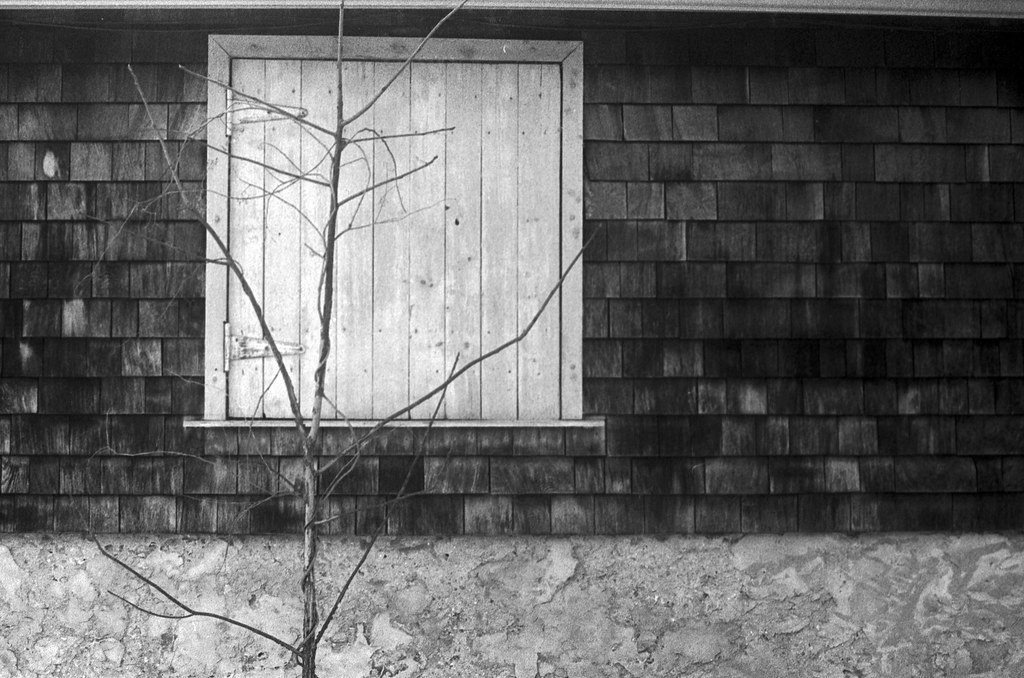

Experiences
The Pellix is an exciting camera from both a historical perspective and a user perspective. Loading the film is easy thanks to the Canon Quick Load system in fact, you could say that Canon was ahead of the game with the QL feature, making loading the camera as easy as my Maxxum 9 or F5. Pull the leader across into the gap and close the back. When it comes to opening the back, the release is not where you would expect it to be, a tug on the film rewind. The back is opened by a lock key on the camera’s baseplate, and make sure to latch it once the film has been loaded, or it will flop open. The camera is not too heavy and makes for a comfortable camera to carry around. If you’re used to the Canon Breach Lock mount, then removing and mounting the lens is a breeze, but I would use both hands for this procedure since all FL lenses use the collar locking system. Something Canon did away with with the FD(n) lenses. And the lenses are critical. Remember you’re working with a fixed mirror that only bounces a third of the light up to the viewfinder, so if you have a slower lens, the viewfinder will be dim. Thankfully, I was in bright conditions with an f/1.4 lens, so the viewfinder was decently bright. There’s no accurate exposure information displayed in the viewfinder itself; focusing is achieved through a small window at the centre with a circle, focus until that centre spot is clear and sharp. Metering is achieved with a match-needle system (sadly not functioning on this copy), with a single needle that you match up to the circle. The controls are smooth and easy to operate, but you have to take your eye off the viewfinder. I noticed how soft the shutter speed dial is; with no click at each stop, it made it a little difficult to feel confident it was set right. Now at this point, you’re wondering how to even meter with the Pellix. With the TTL cell behind the mirror, which lets through the remaining 2/3rd of the light, the CdS cell can automatically adjust. In my case, I was working with my Gossen Lunasix, although a Reveni Hot Shoe meter is another excellent choice for an external meter. Here you have two options; the first is to shoot a film with wide latitude, shoot at box speed and the metered settings and develop normally. It’s close enough that you’ll get good results; the second option is to compensate by adding +0.5 to +1 EV on your meter. Rewinding the film is easy with a traditional release lock on the camera’s base and a rewind crank. I think the cold got to the camera as the shutter failed to fire on a majority of the frames and I ended up losing much of that first roll. The one other troublesome thing that I noticed is that despite having excellent glass, stopping down, and being careful focusing is that the images are soft. I’m going to chalk this up to two things, the first being the age of the camera the second being that pellicle mirror. The light to expose the film still has to travel through a mirror to reach the emulsion; I’m sure in brand new condition. The Pellix produced top quality, but add over half of a century, age has probably done its due.




Optics
While most of my experience with Canon cameras has been with either the newer FD-Mount or the autofocus EF mount, the difference between the FL-Mount and FD-Mount cameras is minimal. And while you cannot use FD-Mount lenses on an FL-Mount camera, the FL-Mount lenses are built to the same standards as any Canon lens. And while I could list off a standard set of lenses for any FL-Camera, the Pellix offers a unique situation. It again comes down to the pesky pellicle mirror, reflecting only a third of the light entering the camera to the viewfinder you need to be using fast lenses. Sadly this seriously limits what lenses would work the best on the camera. You do want to keep the apertures big, at least f/2.8 under bright and sunny conditions with plenty of light available, but realistically you’re going to want at least an f/1.8 or f/1.4. Thankfully, most of Canon’s 50mm lenses are superb options, with the f/1.8 and f/1.4 being relatively affordable on the used market. If you’re in for a perfect look, then the 58mm f/1.2 is the match you’re looking for if you’re willing to spend the cash. You might get away with some f/2.5 lenses, including a 35mm, and there’s even a unique 38mm f/2.8 lens that is ideally suited for the Pellix thanks to the pellicle mirror. You also can add the 85mm f/1.8 lens for something a little longer. Sadly that’s about all the lenses that could work well on the Pellix without causing severe usability issues.




Lowdown
If you’re a fan of unique cameras, then the Canon Pellix is certainly one worthy of a collection. It is the first commercially successful implementation of a pellicle mirror in an SLR. It indeed showed Canon’s desire to try and do something differently. And while ultimately, the use of the pellicle mirror never caught on in a significant way, the Pellix indeed showed what the future could be. Would I use this camera as a daily shooter? Probably not, in my hands, it would probably spend more time sitting on a shelf than in use for a few reasons. The first is the need to use fast lenses to get the best usability, and there is a severe lack of lenses in that area in the FL-Mount catalogue. Second, a mercury cell requires an external meter and adjustments to compensate for the pellicle mirror. And finally, the age of the camera; in this camera’s case, I missed a tonne of frames because of shutter issues. Purchasing the Pellix can be tricky; the body alone is between 20-80 dollars, but once you start adding lenses, especially that desirable 58mm f/1.2, the cost jumps to 200-400 dollars. While the Pellix was fun to try and use, I’m glad I can give it back to Ori.
Further Reading
Don’t just take my word on the Pellix, you can check out the reviews by other awesome camera reviewers!
Mike Eckman – Canon Pellix QL (1966) Review
Lomography – Canon Pellix
Flynn Marr Photography – Canon Pellix Review
Filmphotography.eu – Canon Pellix Review


4 Comments